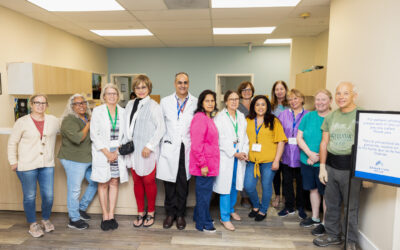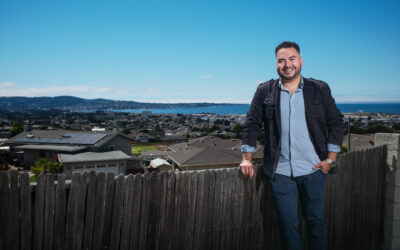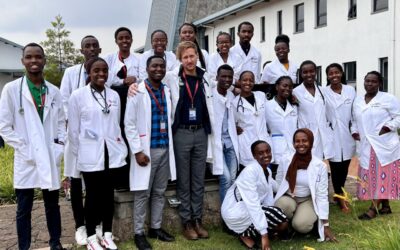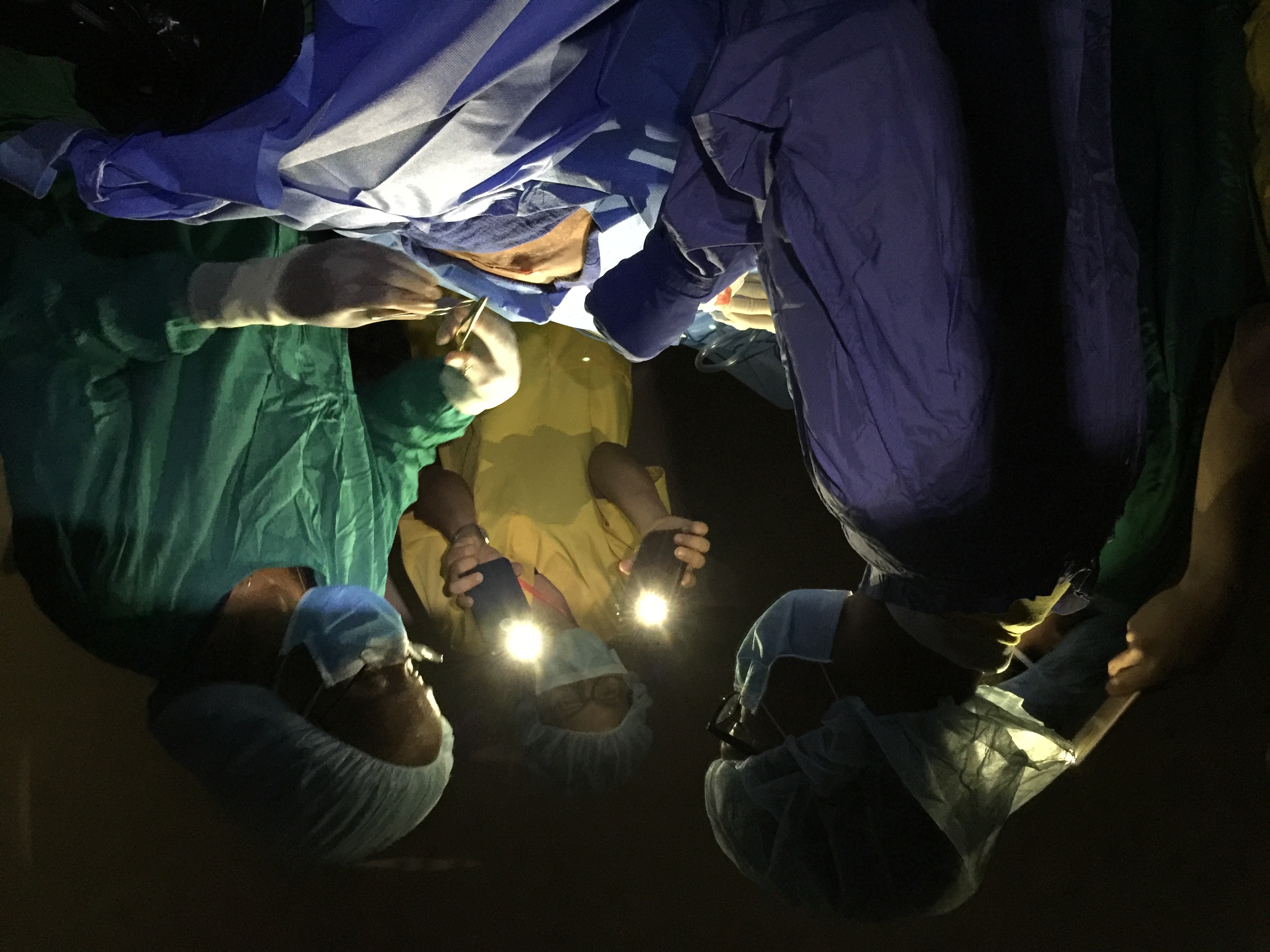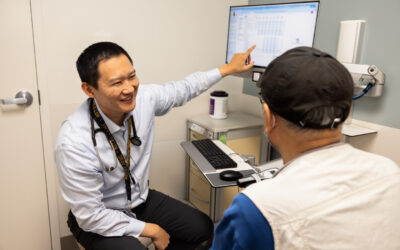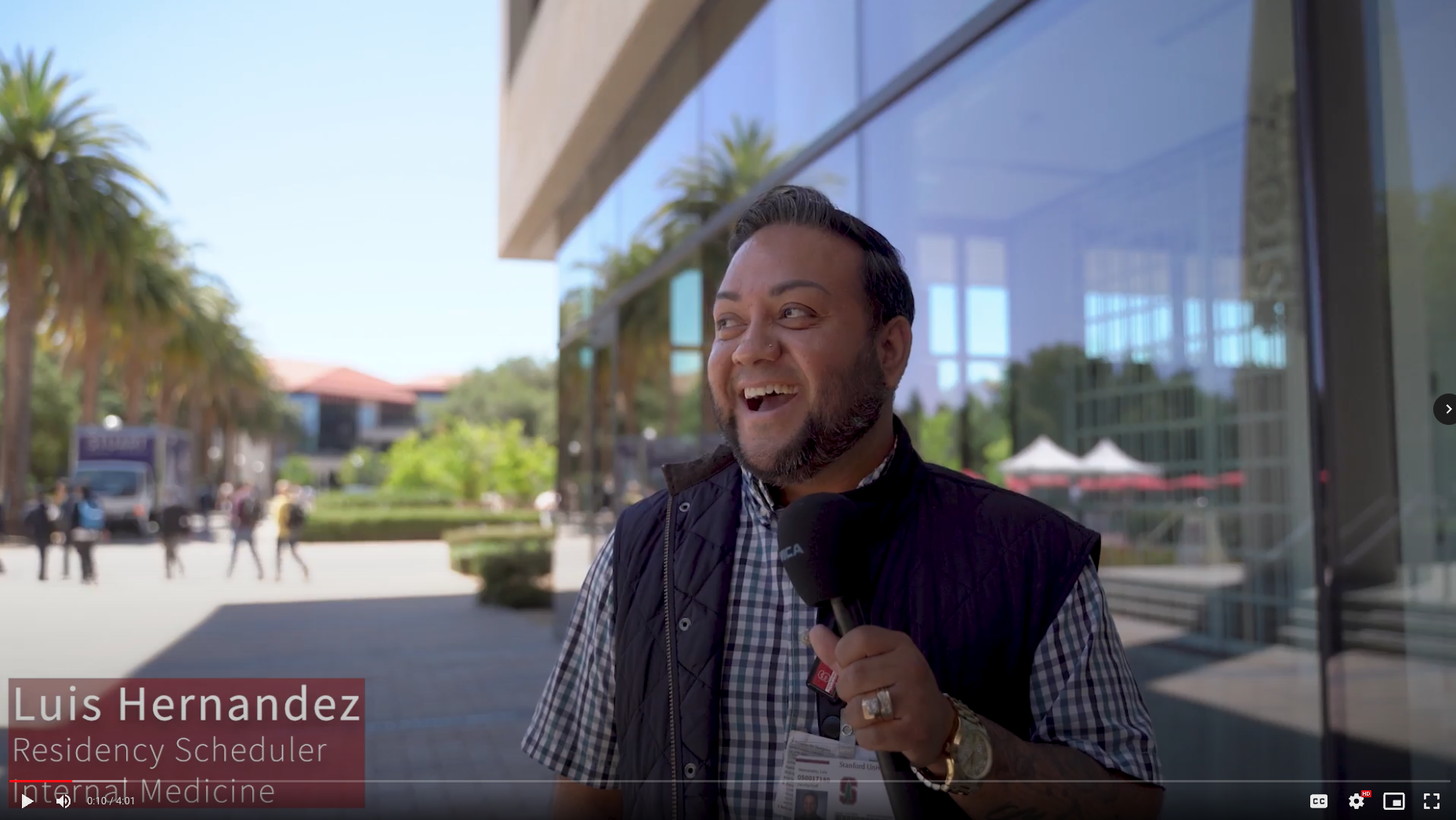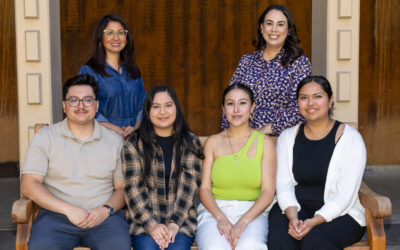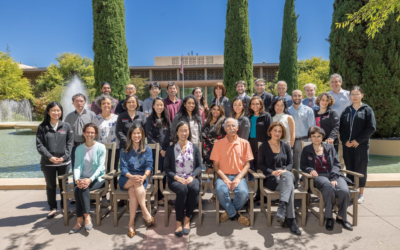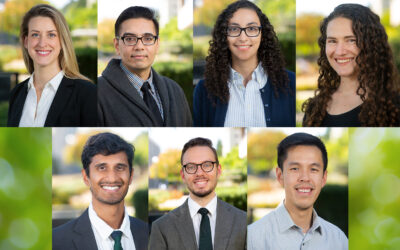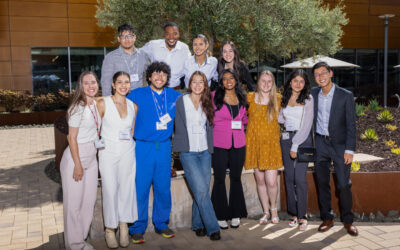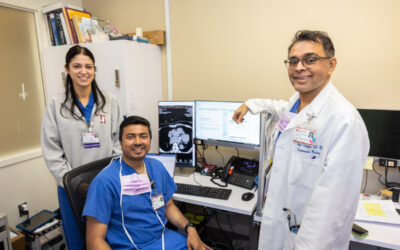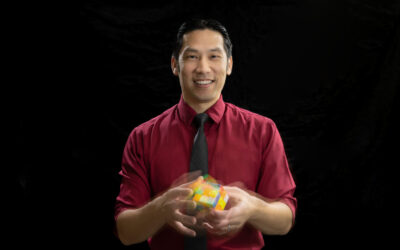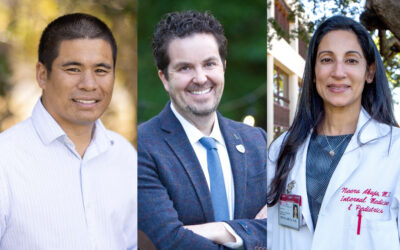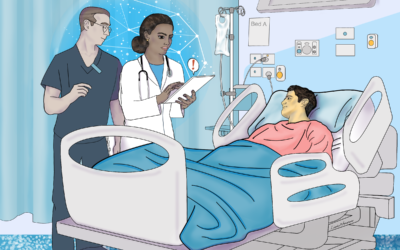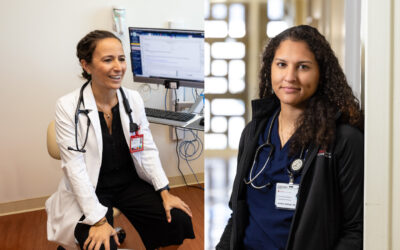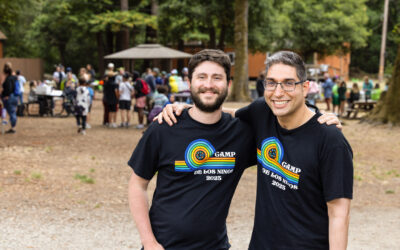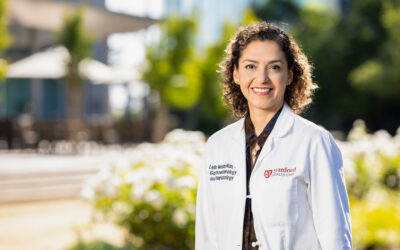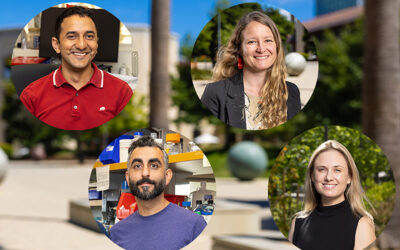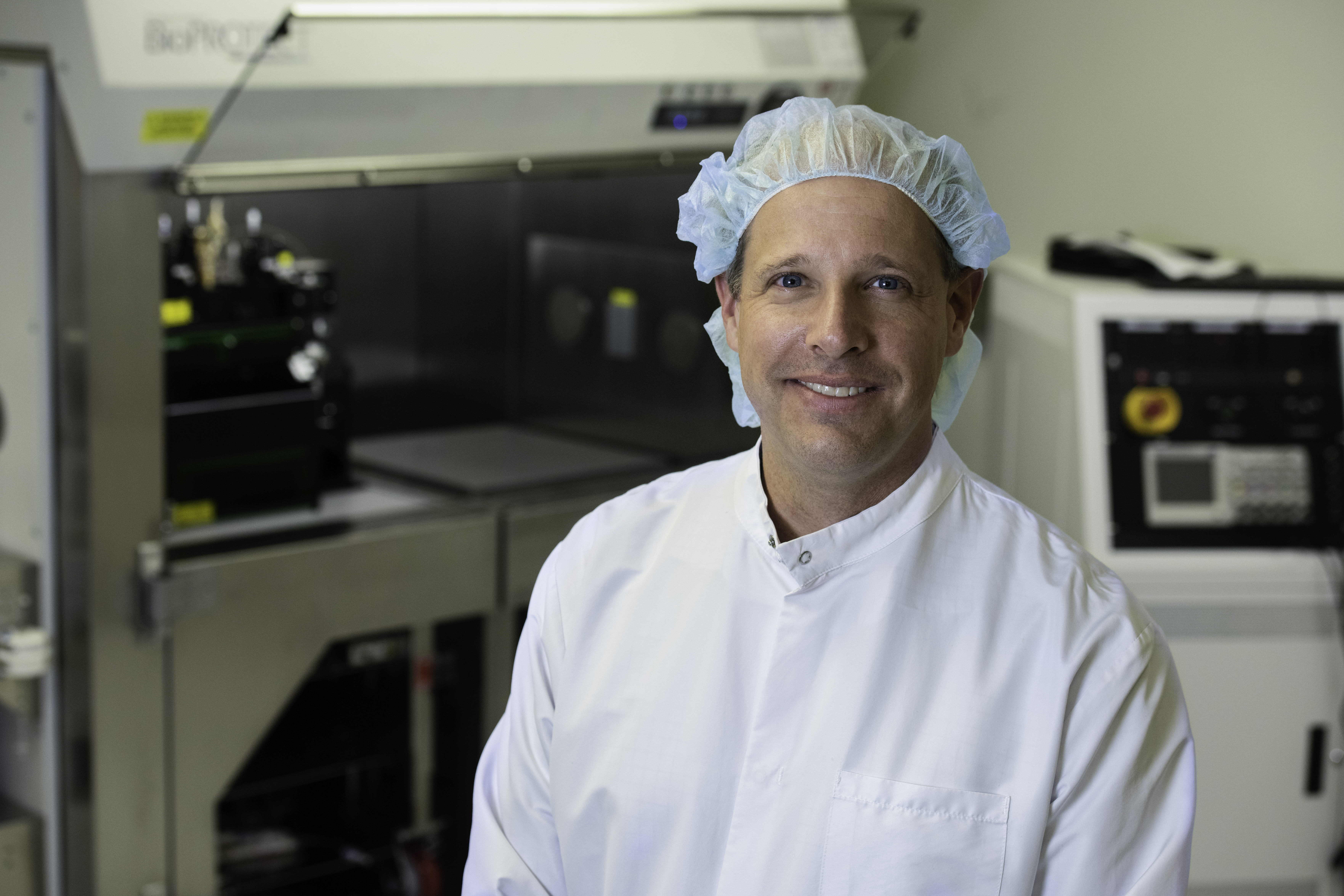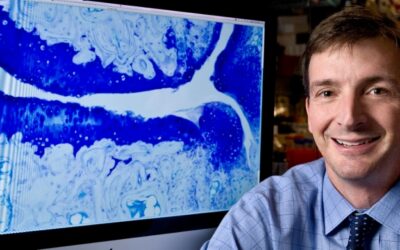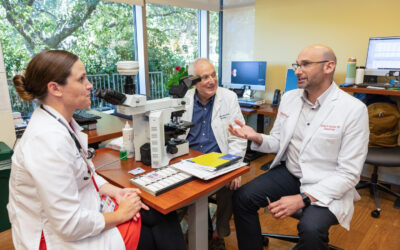2023 Annual Report
Welcome
2023 Annual Report
Welcome
2023 Department by the Numbers
Divisions
12 Clinical
2 Research
1 Administrative
Faculty
92 University Tenure and Non-Tenure Line
132 University Medical Line
476 Clinician Educators
55 Instructors
10 Emeritus-Active
Endowed Professors
Trainees
141 Residents
171 MD Fellows
235 Postdocs
Staff & Research Associates
725 Regular Staff
85 Research Associates
201 Contingent Staff
$234M
$234M
Sponsored Research Expenditures
Fiscal Year 2023
$131M NIH
$8M Other Federal
$57M Non-Federal
$38M in Clinical Trials
New Awards
Fiscal Year 2023
74 NIH
5 Other Federal
89 Non-Federal
56 Industry Trials
2023 Department by the Numbers
Divisions
12 Clinical
2 Research
1 Administrative
Faculty
92 University Tenure and Non-Tenure Line
132 University Medical Line
476 Clinician Educators
55 Instructors
10 Emeritus-Active
Endowed Professors
Staff & Research Associates
725 Regular Staff
85 Research Associates
201 Contingent Staff
Trainees
141 Residents
171 MD Fellows
235 Postdocs
$234 M
$234 M
Sponsored Research Expenditures
Fiscal Year 2023
$131M NIH
$8M Other Federal
$57M Non-Federal
$38M in Clinical Trials
New Awards
Fiscal Year 2023
74 NIH
5 Other Federal
89 Non-Federal
56 Industry Trials
Rebuilding Community Connections
Top-quality medical care does not reach everybody in our communities. Patients have unique needs that our faculty and staff work hard to address. This includes veterans, immigrants, and the unhoused, among others. Stanford’s Department of Medicine is rebuilding community connections and bringing care to underserved populations by integrating medicine and artificial intelligence, partnering with health care clinics around the Bay Area, and expanding our medical collaborations with health care programs around the world. The key is combining cutting-edge medical expertise and resources with trusted service in vulnerable communities.
Rethinking Care and Community in Community-Based Care
For decades, universities and medical programs have made it easy to train to practice medicine in big care centers that are less accessible to underserved populations. Growing collaborations between the Department of Medicine and Bay Area community clinics are helping physicians give back to underserved communities and clinics expand the impact of their expertise and community trust.
Revitalizing Veteran Care
Staffing shortages during the COVID-19 pandemic prompted an innovative program using student volunteers to engage veterans remotely—with astounding results.
Stanford Scores Big Wins for Equitable Healthcare
Stanford researchers break down barriers to equitable care with research designed with and for patients, while getting support from payers finally recognizing the value of previously underutilized tools and strategies.
Unleashing the Power of AI in Primary Care
Stanford Healthcare AI Applied Research Team (HEA₃RT) is redefining health care by unleashing the potential of artificial intelligence — from relieving physician burnout to advancing equity to groundbreaking collaborations with industry giants like Google and cutting-edge technologies like ChatGPT.
Partnering for Health Equity and Global Health Education
What do Stanford Medicine and a new university in Rwanda have in common? A shared commitment to health care capacity-building and fostering global health equity across continents.
Where Health Care Is a Luxury
Thousands of village dwellers in rural Cambodia wait as many as 10 hours every day to see a physician in the annual medical mission of the Cambodian Health Professionals Association of America. A Stanford professor of medicine has been volunteering with this organization for the past decade, extending the expertise of American medicine to people for whom health care is a luxury.
Stanford Is Going South
Stanford’s brand-new cardiovascular medicine clinic delivers comprehensive cardiovascular care close to home for the South Bay community, while Stanford Medicine gets a more diverse patient population.
Community Engagement
Pause, Reflect, and Begin Again
In on-the-street interviews, staff members share how they recharge energy for their professional and personal lives, contemplate positive change in the Department of Medicine, and embody the spirit of renewal through their expressions of resilience, hope, and optimism.
Paid Summer Internship Program Furthers Stanford Commitment to Diversity, Equity, Inclusion
Do you have to attend Stanford to get a job there? Are there other ways to work in health care besides going to medical school? These are some of the questions posed by many college undergraduates. The Department of Medicine’s Paid Internship Program provides answers, while creating connections with prospective employees who are passionate about diversity, equity, inclusion, and belonging.
From Bariatric Surgeon to Accidental Activist
Academic physician Arghavan Salles has dedicated her career to conducting research that sheds light on societal problems and pushes our institutions toward more inclusive policies. In this interview, she examines how social media has proven to be integral to that work.
Making the Meaning of ‘First-Generation’ From College to Career
What does being a “first-generation college student” mean to the students themselves? Three staff members in the Department of Medicine revisit what it means for them to be first-generation college students, offer insights into the struggles that first-generation students face after graduation, and give suggestions for how first-generation graduates can succeed in their careers at Stanford.
Endocrinology Division’s Mini-Symposium Marks Return to In-Person Events
After years of isolation during the COVID-19 pandemic, the endocrinology division renewed tangible connections with a resumption of in-person gatherings for celebrations, conferences, celebrations, and more.
Education
Translational Investigators — the Future of Team Science
Meet the newest physician-scientists at Stanford! These young doctors are starting their multiyear training in the Translational Investigator Program, working with peers and mentors to synergize their talents. This year’s interns are especially diverse, bringing unique backgrounds, perspectives, and passion to their quest to tackle some of medicine’s grand challenges.
The Pre-Renal Initiative
The nationwide epidemics of diabetes and obesity have created a huge, unmet need for nephrologists to treat the chronic kidney disease that often results from these conditions. The Pre-Renal Initiative is designed to attract undergraduate college students to the field of nephrology before they even enter medical school.
How to Secure Competitive R01 Research Grants? Check Out This Program!
One of the hardest parts about being a researcher is applying to R-series NIH grants. The R01 Countdown Program offers junior faculty the opportunity to learn how to produce clear, organized, and impactful grant applications alongside their colleagues.
CHIP: Where Artificial Intelligence and Cardiology Come Together
Artificial intelligence (AI) may strike fear into your heart, but Stanford’s Computational Medicine in the Heart: Integrated Training Program (CHIP) is using it for heart health. The key, says CHIP Director Sanjiv M. Narayan, MD, PhD, is to recognize that AI is a powerful tool to support clinical care, not replace clinicians.
Clinical Care
How to Endure in a Pandemic? Magic!
What’s it take to solve a Rubik’s Cube? Hospitalist, bioinformatician, and magician Jonathan Chen can solve the puzzle in seconds. While magicians never divulge their tricks, this one reveals how those tricks helped him deal with the worst year of his life.
Hospital Medicine and Oncology Rise to Meet the Needs of More Patients
Hospital Medicine and Oncology bet big on teamwork and recruit teams of physicians to manage a number of patients that’s been growing since before the pandemic, renewing the hospital’s ability to care for its community.
Clinical Informatics Harnesses Information Technology to Revolutionize Patient Care
Through innovative research, hospital operation workflows, and medical education, the Clinical Informatics Group in hospital medicine explores how information technology can be used in exciting new ways to improve the quality of patient care inside and outside the hospital.
Two Residents, United in Equality, Are Fighting Health Disparities
Christine Santiago, MD, and Natasha Steele MD, are magnets for change. Read how their childhood experiences of navigating the healthcare system as minorities didn’t break them, but instead drove them to emphasize quality, diversity, and humanity as they seek better health outcomes.
Inspired by Their Own Experiences With Type 1 Diabetes, Two Endocrinologists Push for Change
Endocrinologists Michael Hughes and Rayhan Lal — who both live with type 1 diabetes — dedicate their work to improving diabetes technology for patients.
From Oncology Staff to Oncology Patient
Kristy Kerivan has worked for the Stanford School of Medicine for 20-plus years, currently in the division of oncology. When she was diagnosed with breast cancer, Kerivan went from employee to patient, and she developed a deeper appreciation for cancer care and research at Stanford.
Tying Together Pelvic Health and the Microbiome
With its coordinated multidisciplinary focus, the Stanford Pelvic Health Program offers relief from suffering that cannot be found anywhere else. In research led by Leila Neshatian, MD, the program is exploring how the microbiome reflects the health of pelvic muscles, which could lead to novel therapies for embarrassing and painful pelvic pathologies.
Research
Renewing the Field
Meet four exceptional physician-scientist research fellows who are ushering in a new era in infectious disease. Delve into their groundbreaking work, learn how they’re making the world healthier, and hear how they blow off steam to stay sane in a highly competitive field.
SCCR’s Quality and Compliance Team Shows Resilience Amid Pandemic Pivots
When COVID-19 hit, some research paused, other projects abruptly went virtual or hybrid, and pandemic-related research took off. From quarantining paper consent forms to supporting participants over video calls, SCCR’s quality and compliance team responded to every curveball.
Driving Medical Progress
The career of Susan Jacobs, RN, MS, has transformed pulmonary research, shaping it from scratch to a program of roughly 30 diverse trials. A beacon of dedication and expertise, she navigates complex trials and supports patients while mentoring budding researchers.
Teaching Tolerance to the Immune System
Building off the incredible success of cancer immunotherapies, researchers are now reprogramming the human immune system to prevent organ rejection and treat autoimmune disease.
Revealing Microbial Triggers of Autoimmune Disease
A team led by William Robinson, MD, PhD, is revolutionizing scientists’ understanding of how routine viral infections can contribute to chronic autoimmune diseases like multiple sclerosis and rheumatoid arthritis.
On the Hunt for Knowledge
Hematologists Peter Greenberg, MD, and Gabe Mannis, MD, are laser-focused on finding better treatments for myelodysplastic syndromes and acute myeloid leukemia, respectively. Every answer on the path forward leads to new questions. Discover what they’re asking now.

